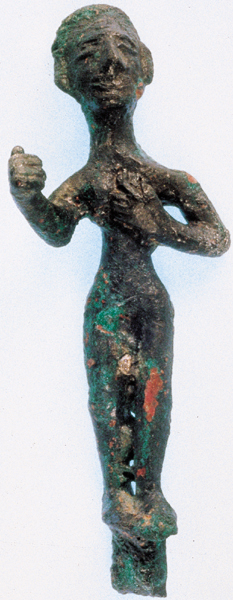Image Details

Troy Project/Tübingen University
Standing Warrior. Evidence is mounting that Troy VI’s inhabitants were not Greeks but Luwians—a people who arrived in Anatolia about the same time as the Hittites (third millennium B.C.) and whose language is closely related to Hittite. This small bronze figure (shown here) has parallels from Hittite sites, but not from Greek sites. Other evidence from the recent excavations—for example, standing stones found at the city’s gates—suggests that Troy (known in early Greek as Wilios) was in fact the city known to the Hittites as Wilusa. One Hittite text, from about 1280 B.C., records a treaty signed by the Hittite king and the king of Wilusa. Three gods are named as witnesses of this treaty—and archaeological excavations have found evidence from Troy VI of cults devoted to two of these gods.
